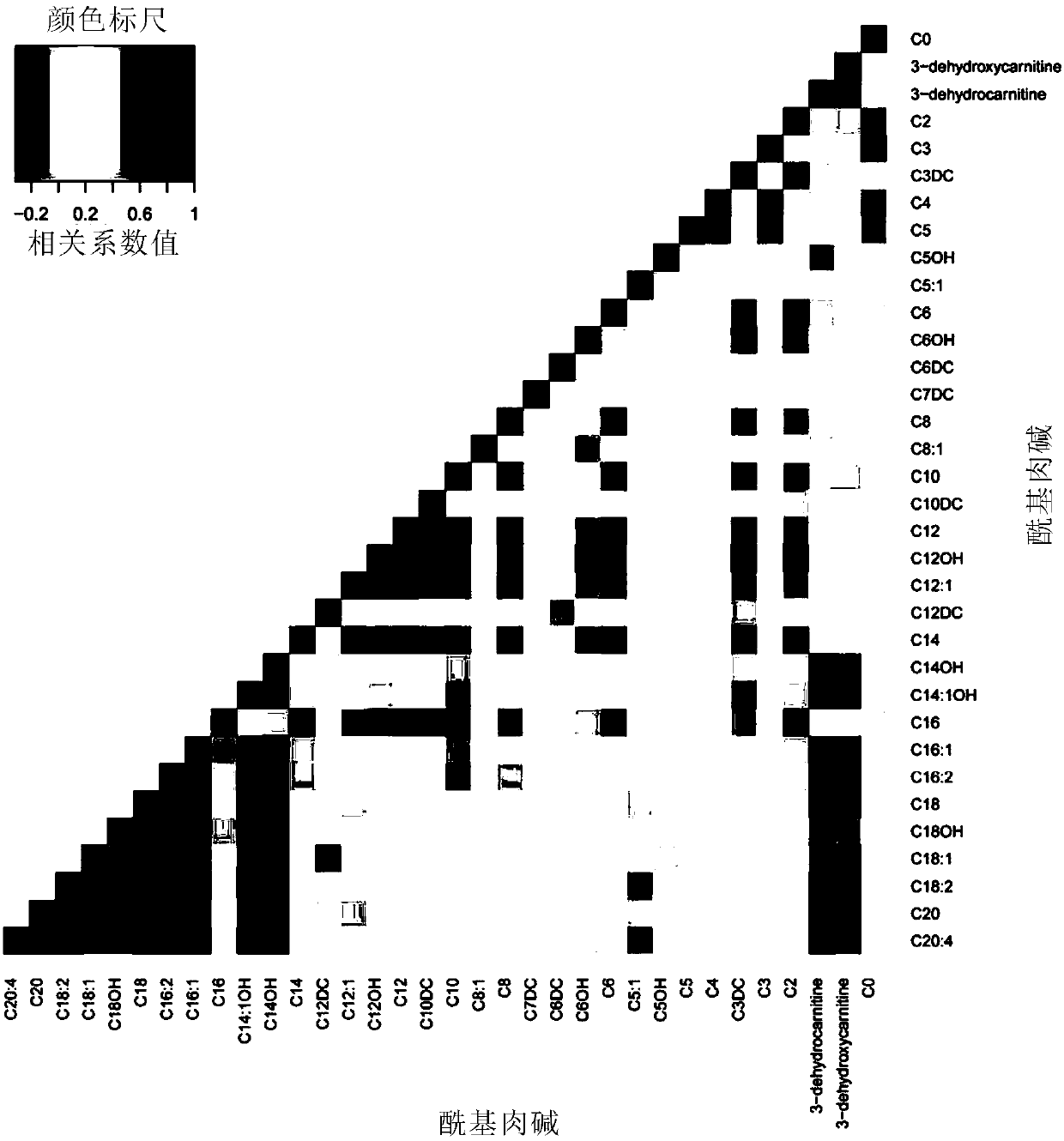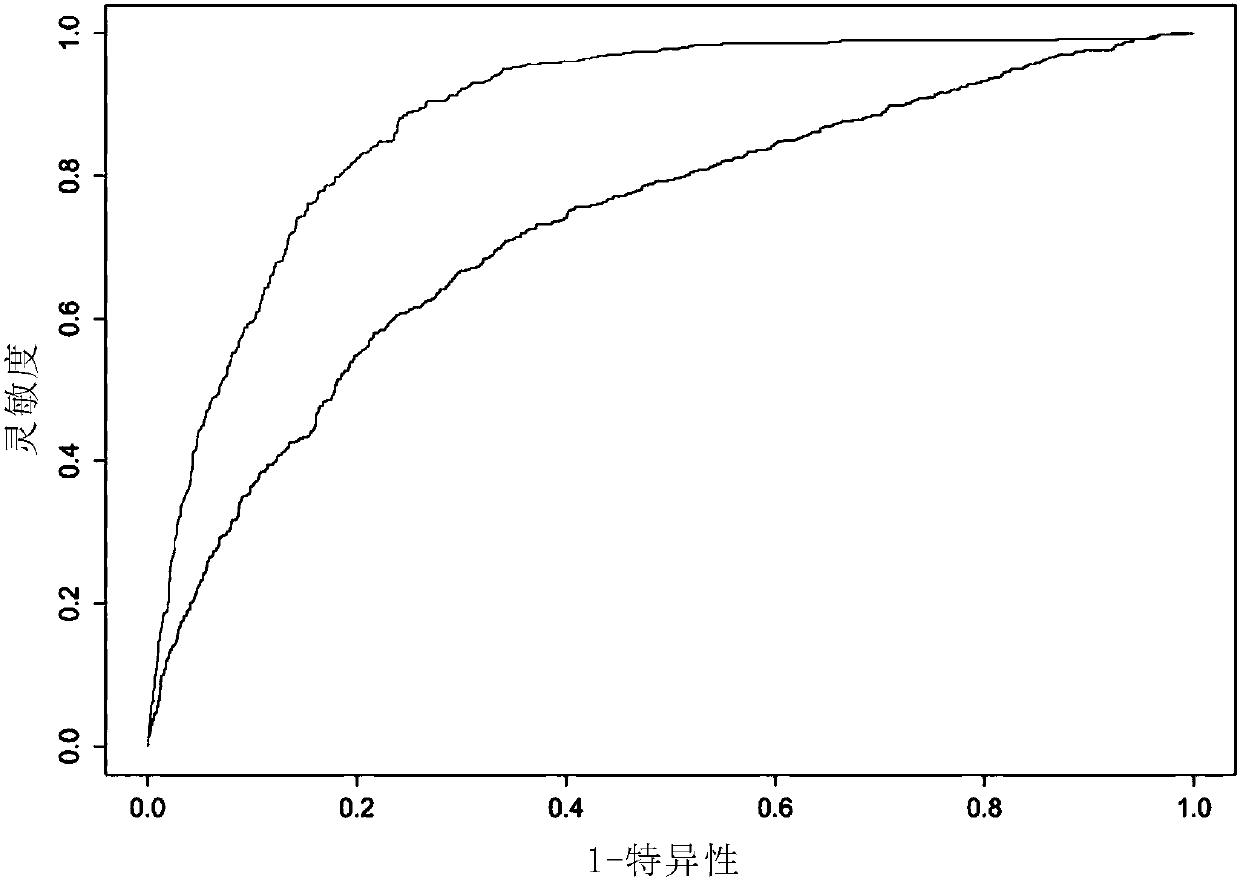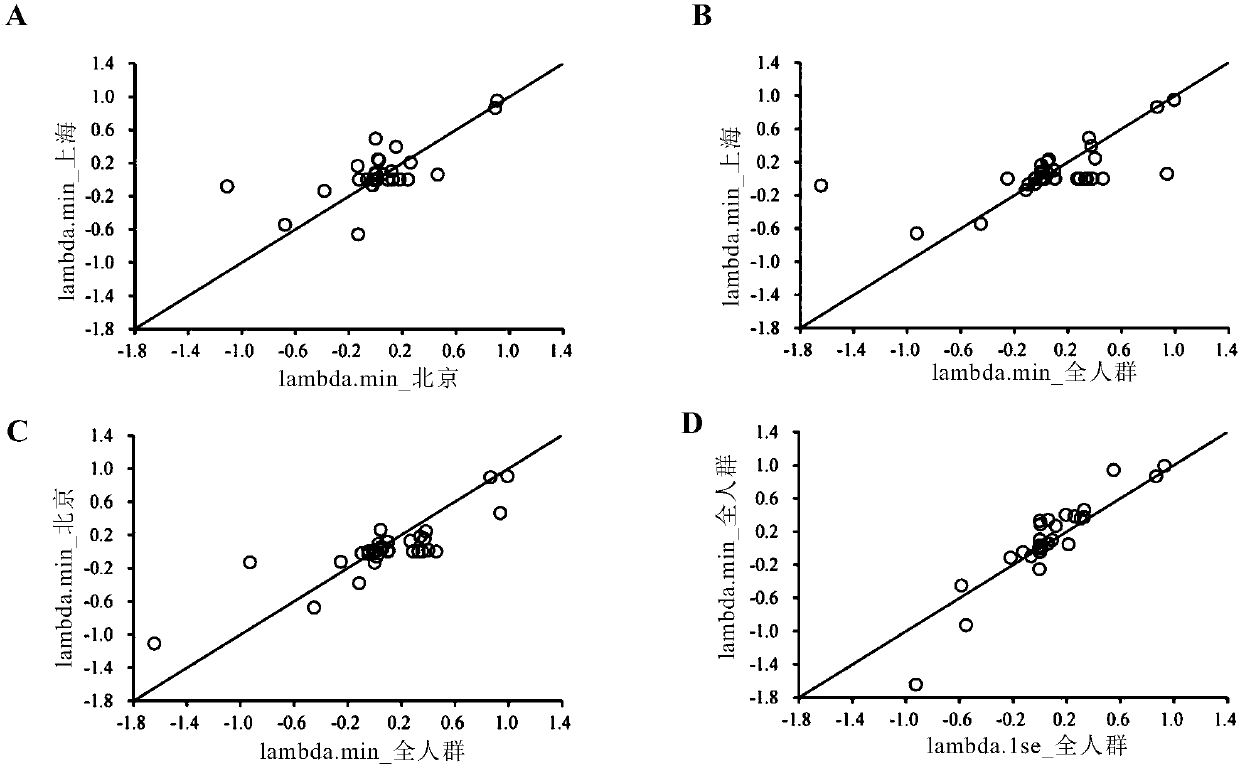Application of acylcarnitine spectrum or detection reagent thereof in prediction of onset risk of type 2 diabetes mellitus
A type 2 diabetes and acylcarnitine technology, applied in the medical field, can solve problems such as the lack of a simple and reliable type 2 diabetes prediction system
- Summary
- Abstract
- Description
- Claims
- Application Information
AI Technical Summary
Problems solved by technology
Method used
Image
Examples
Embodiment 1
[0119] Baseline Characteristics Study
[0120] During the 6-year follow-up, there were 507 (24.1%) new-onset T2DM patients. Baseline characteristics and plasma acylcarnitine concentrations were compared in newly-onset diabetic patients and controls (Table 3). Compared with controls, there were more Beijing residents and family history of diabetes among new-onset diabetes patients. They had higher baseline BMI, systolic blood pressure, fasting blood glucose, HbA1c and insulin (P<0.05). In terms of baseline plasma acylcarnitines, patients with new-onset diabetes had higher C0, C3DC, C4, C5, C5OH, C8:1, C10, C14OH, C14:1OH, C16:1, C16:2, C18, C18OH, C18:1, C18:2, C20 and C20:4 acylcarnitines with lower levels of 3-dehydroxycarnitine, 3-dehydrocarnitine, C7DC, C10DC, C12, C12OH and C12:1 acylcarnitines.
[0121] Table 3 Comparison of baseline characteristics and plasma acylcarnitine profiles of new-onset type 2 diabetes cases-controls.
[0122]
[0123]
[0124] Data are...
Embodiment 2
[0126] Acylcarnitines and Metabolic Profile
[0127] For correlations between baseline acylcarnitines see figure 1 . Although most acylcarnitines were correlated, the most correlated acylcarnitines (r>0.7) were medium and long chain species. Interestingly, when the correlation between baseline acylcarnitines and metabolic profile was analyzed, it was found to be more strongly associated with follow-up fasting glucose than with baseline fasting glucose (Table 4). Likewise, baseline acylcarnitines were also more strongly associated with 6-year change in fasting blood glucose than with baseline fasting blood glucose. In contrast, the associations of baseline acylcarnitines with HbA1c and insulin were similar at baseline and follow-up.
[0128] Table 4 Correlation of baseline acylcarnitines with fasting blood glucose, HbA1c, and insulin.
[0129]
[0130]
[0131] Gender, age, region and rural-urban were controlled. *P
Embodiment 3
[0133] Type 2 Diabetes Prediction Model
[0134] During the 6-year follow-up, the risk of type 2 diabetes was correlated with C0, C3DC, medium-chain (C8:1, C10, C14OH, C14:1OH) and long-chain (C16:1, C16:2, C18, C18OH, C18: 1, C18:2, C20, C20:4) acylcarnitines are positively correlated with carnitine precursors (3-dehydroxycarnitine, 3-dehydrocarnitine), medium-chain dicarboxylic acids (C10DC, C12DC) and C12 (C12, C12OH, C12:1) was negatively correlated with acylcarnitines (Table 5). When acylcarnitines were classified according to chain length, only long-chain acylcarnitines were significantly associated with the risk of type 2 diabetes (P<0.001).
[0135] Table 5 Relationship between single acylcarnitines and the risk of developing type 2 diabetes.
[0136]
[0137]
[0138] Age, sex, region, urban and rural areas, smoking, alcohol consumption, physical activity, family history, BMI, fasting blood glucose, HbA1c, and systolic blood pressure were controlled. *Signifi...
PUM
 Login to View More
Login to View More Abstract
Description
Claims
Application Information
 Login to View More
Login to View More - R&D
- Intellectual Property
- Life Sciences
- Materials
- Tech Scout
- Unparalleled Data Quality
- Higher Quality Content
- 60% Fewer Hallucinations
Browse by: Latest US Patents, China's latest patents, Technical Efficacy Thesaurus, Application Domain, Technology Topic, Popular Technical Reports.
© 2025 PatSnap. All rights reserved.Legal|Privacy policy|Modern Slavery Act Transparency Statement|Sitemap|About US| Contact US: help@patsnap.com



